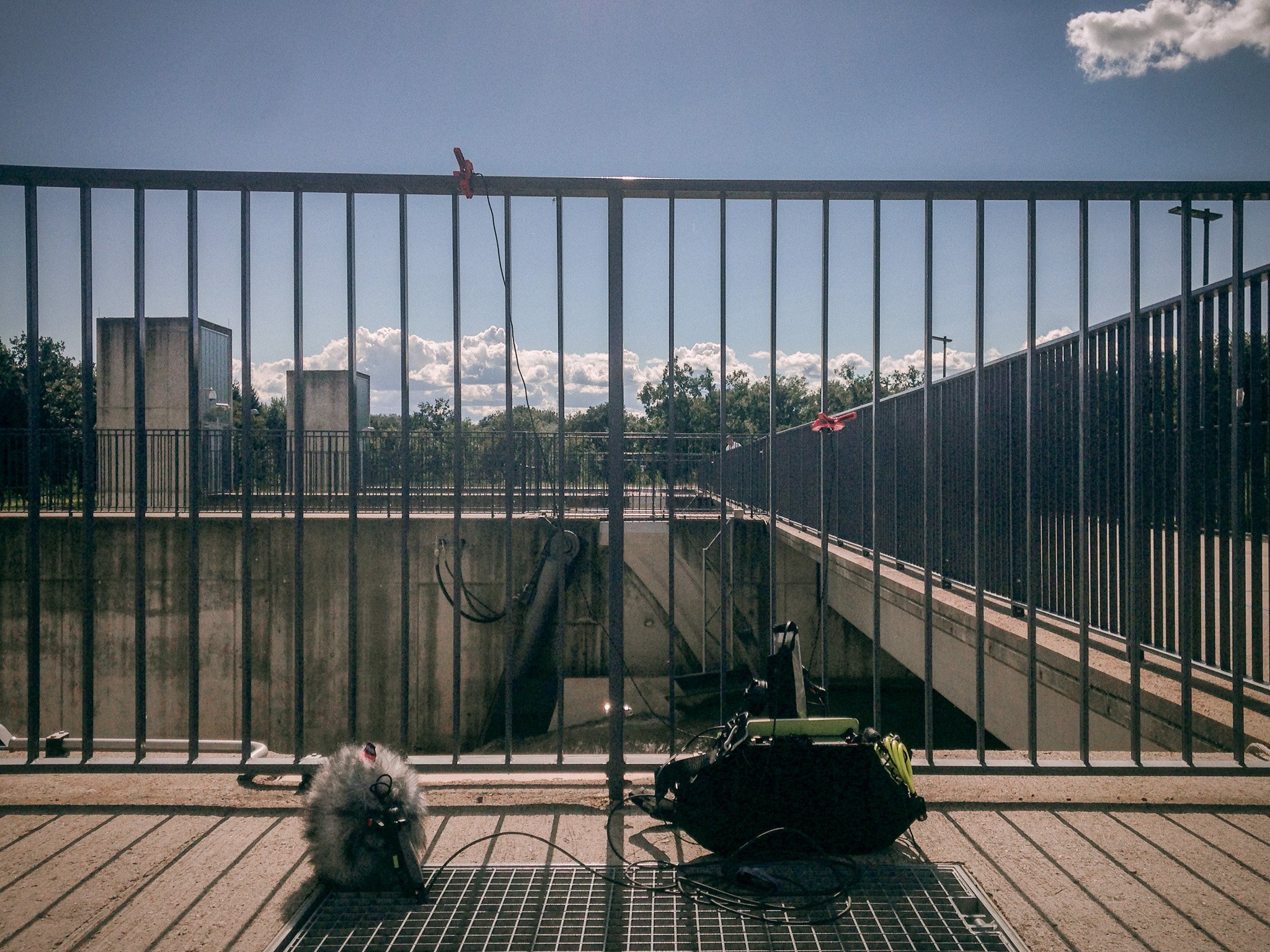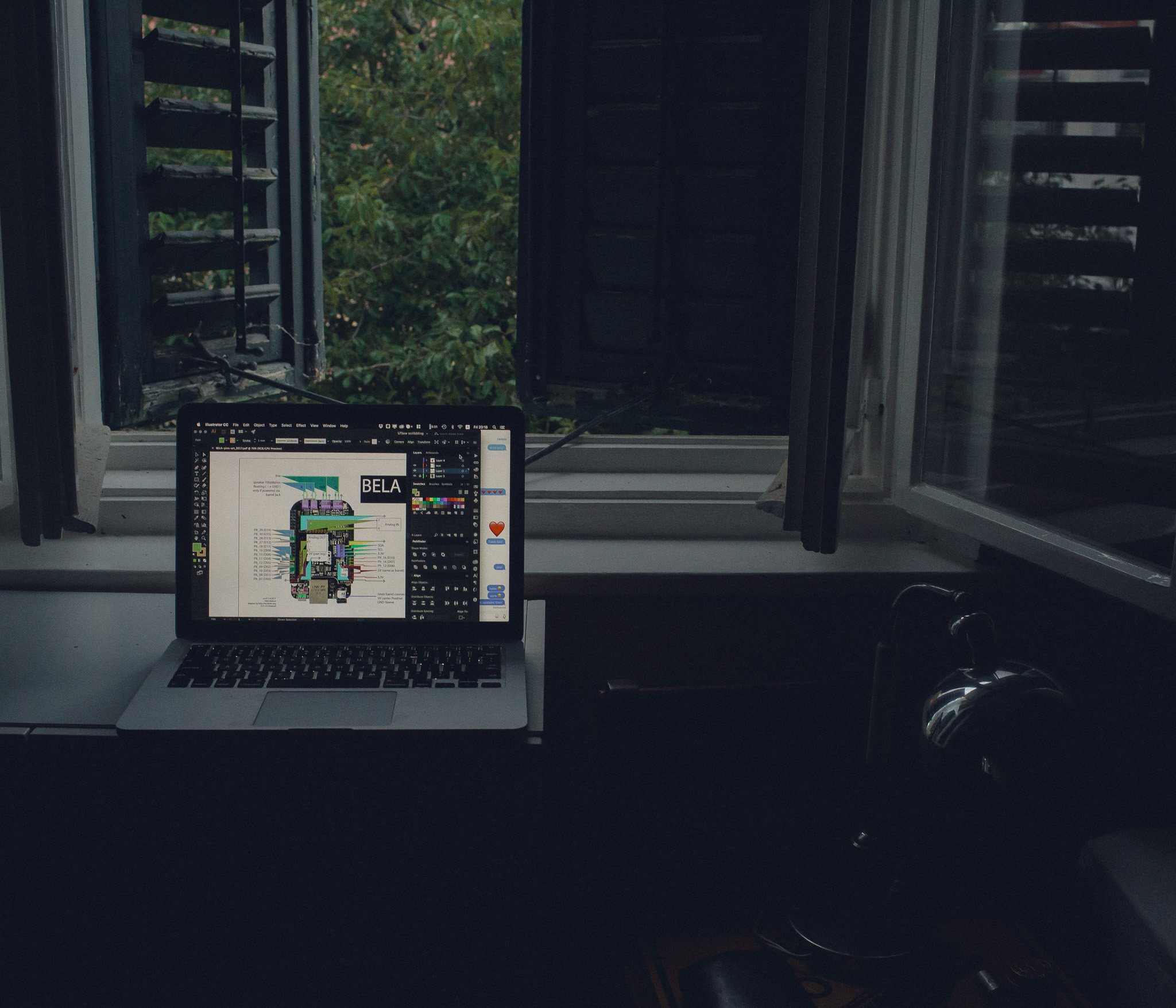I made a [[posts/2017-08-16-bela-pin-diagram|BELA pin diagram]].
Field recording at Wasserkraftwerk Link to heading
I recorded Source material at and around the water power plant in Feldkirchen a.d. Mur.

Bug fixing and enhancing Steno Link to heading
The language steno turns out to be a wonderful way to explore massive sound synthesis based on simple base elements. Since it is quite young, it still has some bugs to be tracked and can also be enhanced with useful features. The majority of the last week, I explored the possibilities of the language, traced bugs and wrote little enhancements. Two of them are
Fixing nesting depth for synth elements: Link to heading
t = Steno(2, true).push;
t.quelle(\a, {|in, ctls|
SinOsc.ar(100 * ctls[\nestingDepth] + 200)
});
-- a(aa(aa))
// >> equivalent to
{Mix.ar(SinOsc.ar([100, 200, 200, 300, 300]))!2}.play
Introduction of negative feedback to Steno variables Link to heading
A negative value inverts the signal on its feedback path. This makes it possible to implement quite a nice variability in feedback paths:
t = Steno(2, true).push;
(
// a filter that creates an impulse
t.filter(\i, {|in, ctls|
Dust2.ar(10) + DelayL.ar(in.reverse, 0.1, {Rand(0.001, 0.0005)}!2, 1)
});
// a variable
t.declareVariables([0]);
)
// swap between one and more filters
-- 0i0
-- 0ii0
// the feedback parameter turns it into a Karplus-Strong model
t.set(\0, \feedback, 0.9)
// a negative value halves the ringing frequency
t.set(\0, \feedback, -0.9)
